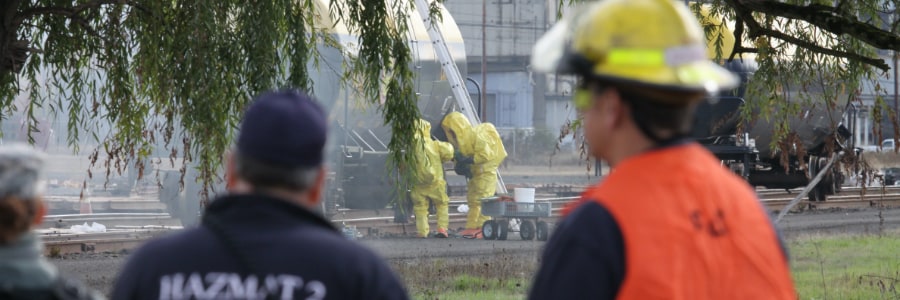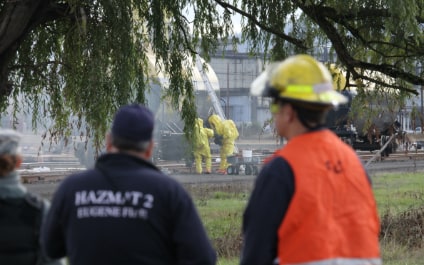
“We have a situation here!”
“We may have a problem.”
“There has been an incident!”
“I’ve got a bad feeling about this.”
– Han Solo (Star Wars)
How Did We Get Here?
Emergencies are often initially described in obscure ways. This is typically due to a lack of understanding of how to categorize incidents and an unawareness of the spectrum from an unplanned incident to a full-scale disaster. The observer of the “situation” may think to herself, “How do I describe what I see? How serious is the ‘incident’? Who should I contact and what comes next? How high will the ‘problem’ escalate?”
During the span of an incident, there are crucial stages where hazards are identified and decisions must be made to avoid a full-scale disaster. Disasters happen when poor (or no) decisions are made and there is a failure to manage a crisis. Understanding the stages along the spectrum of incidents will help crisis leaders know the turning point when decisions must be made to keep the incidents from escalating to disasters.

Stage 1: Incident -- Awareness Stage
In the first stage, responders become aware that something isn’t normal. Something has happened that wasn’t supposed to happen. There is an incident. The awareness stage requires the observer to answer the question, “Is something wrong?” Deciding that an “incident” has happened will escalate it to the next stage.
Example: An employee notices a drum of biohazard waste is compromised. It was controlled, and now it’s uncontrolled. Is this a problem? An emergency? If the answer is “yes”, they have made the decision that an incident has happened. If they can control and contain it, then the incident can be resolved, but it they need outside assistance to contain or control the incident, then it escalates it to an emergency— the second stage in the spectrum of incidents.
Stage 2: Emergency -- Response Stage
In the response stage, the initial responder recognizes that the incident is an emergency and takes the proper action steps to communicate the emergency to the appropriate response level. Recognizing that the incident is an emergency means they can’t handle the incident on their own and they need to call or request help from the proper authorities. During this stage, a risk assessment is often required to make good initial decisions. This begins with sizing up the scene by making key observations. This will help to minimize the environmental, health, and safety impacts of the emergency. If someone finds that there are serious risks to health, safety or to the environment, they will be able to determine if the emergency is escalating to a crisis.
Example: A member of the local community identifies that a building is on fire. He does not have the capability to stop or de-escalate the incident so he calls 9-1-1 to notify proper responders of the emergency. He recognized that he could not handle the incident on his own. Initial responders arrive on scene and size up the scene to begin their risk assessment.
Stage 3: Crisis -- Decision Stage
Stage 3 is a crucial turning point in the spectrum of incidents. Emergencies that escalate in size, severity and scale must quickly be moved into the crisis category. Crises are incidents with serious threats to life and the environment. Decisions must be made quickly to manage the crisis. There are elements of trauma and emotion that escalate the stress level of the incident. Good crisis leadership and decision-making tools will keep the crisis from escalating further to an unmanageable disaster. However, a lack of leadership and an inability to make timely, wise decisions will ultimately escalate the crisis to the final stage in the spectrum of incidents.
Example: First responders arrive to the building fire and learn there are chemicals inside that may explode. This emergency has now become a crisis. Depending on how the crisis is managed will determine if it escalates to a disaster.
Stage 4: Disaster -- Unmanageable Stage
Crises that are not managed well, or that grow too quickly, can escalate out of control into disasters. Disasters occur when destruction is large-scale, and there is significant loss of life and damage to the environment. Sometimes there can be a far-reaching impact across the nation or entire globe, and the scope of the incident becomes impossible to manage. During a disaster, crisis leaders try their best to lessen the impact, but there is no hope of completely controlling it or moving into the recovery phase until the disaster has ended naturally. Only well-prepared communities weather the storm based on their resiliency.
Example: Disasters of global significance include the Ebola outbreak that transcended national boundaries and the radiation release at Chernobyl that contaminated large areas of Europe.
Perhaps it’s too early to declare the COVID-19 pandemic as a global disaster, but it certainly has reached the
crisis stage in many countries, whereas in a few countries it may have already reached the disaster level.
Avoiding Disasters
There is a crucial turning point when the crisis is either managed effectively and recovery begins, or it escalates into a disaster. During a crisis, the crisis leader is put in a very challenging role. Stress levels are high and there are many challenges to managing a high volume of evolving information. Gathering reliable and timely information is key, along with the leader’s ability to properly project the outcomes of each decision. There are many decisions which need to be made and each could have a disastrous consequence. Gaining the skills and tools for making high-impact decisions during intensely stressful situations will help crisis leaders manage crises and prevent incidents escalating from crises to disasters.
Another key element to avoiding disasters is mitigating the effects of emergencies through proper planning, infrastructure design, equipping, training, exercises and risk assessments. These mitigation efforts can lead to a resilient community, able to bounce back stronger from a disaster.
Alliance Solutions Group (ASG) has developed a cutting-edge crisis leadership and decision-making course that can be tailored to fit the needs of crisis leaders in any sector, and has delivered this course to a broad spectrum of first responders, public health and medical emergency managers. The course is designed to help crisis leaders understand the psychological and physiological effects of stress, improve skills for situational awareness, understand how to use decision-making models during high-stress situations, and gain practical skills for successfully navigating a crisis.
To learn more about the crisis leadership and decision-making course or other consulting services ASG can provide, contact us at 757-223-7233 or go to https://www.asg-inc.org/public-sector/emergency-management/.
Don't worry, no spam here!
Keep up to date with the latest trends, best practices and innovations in the Emergency Management and Environmental, Health and Safety sectors.

